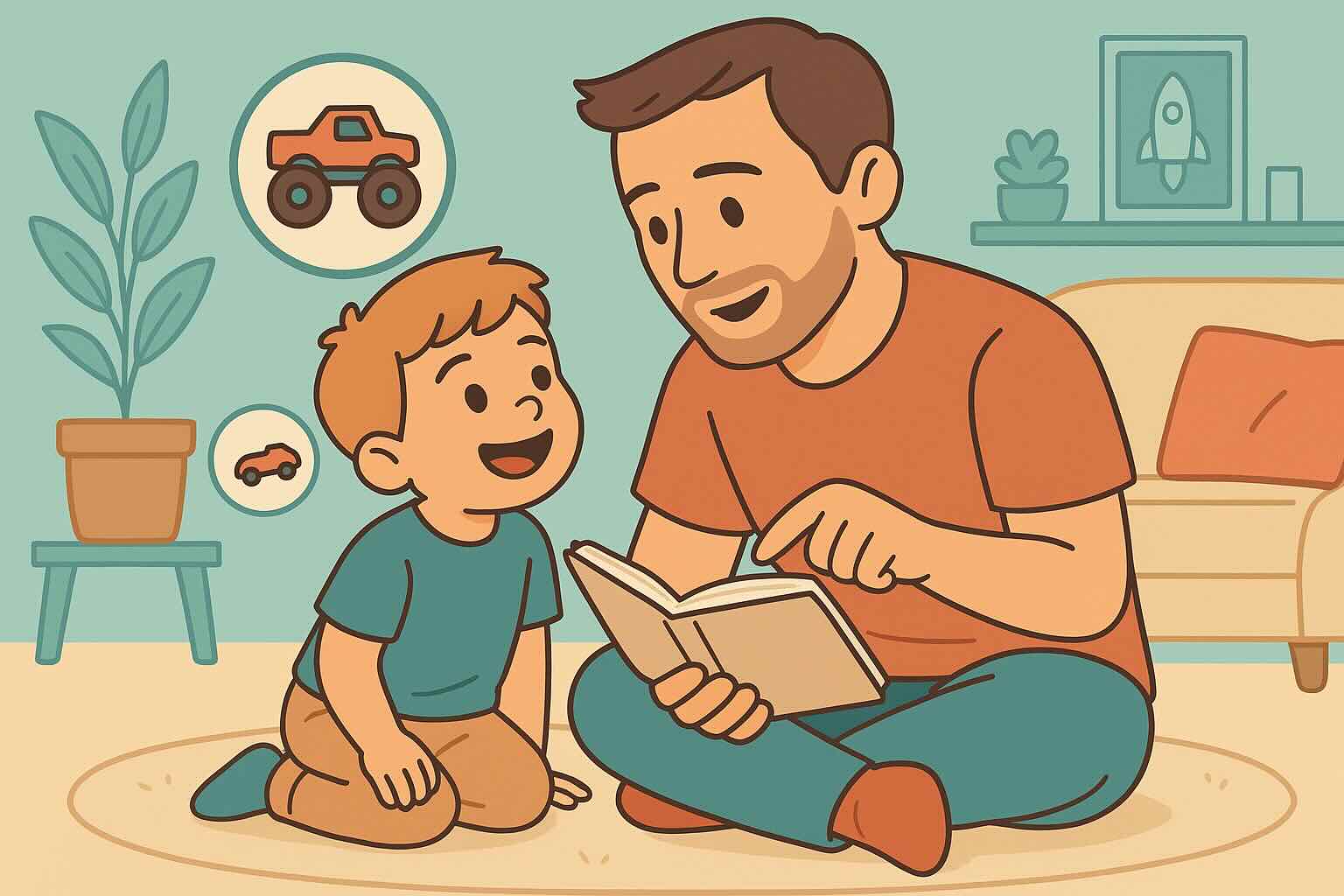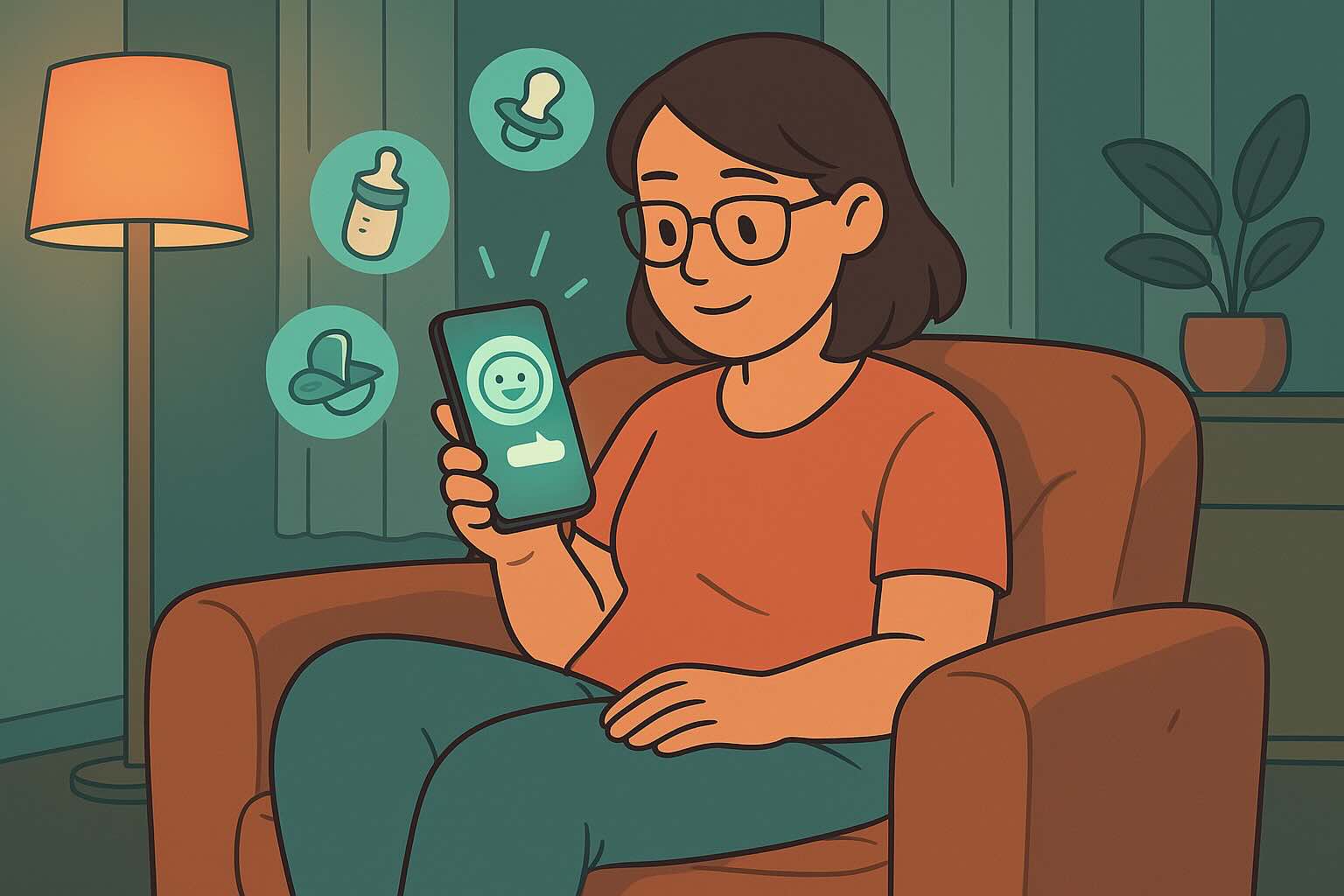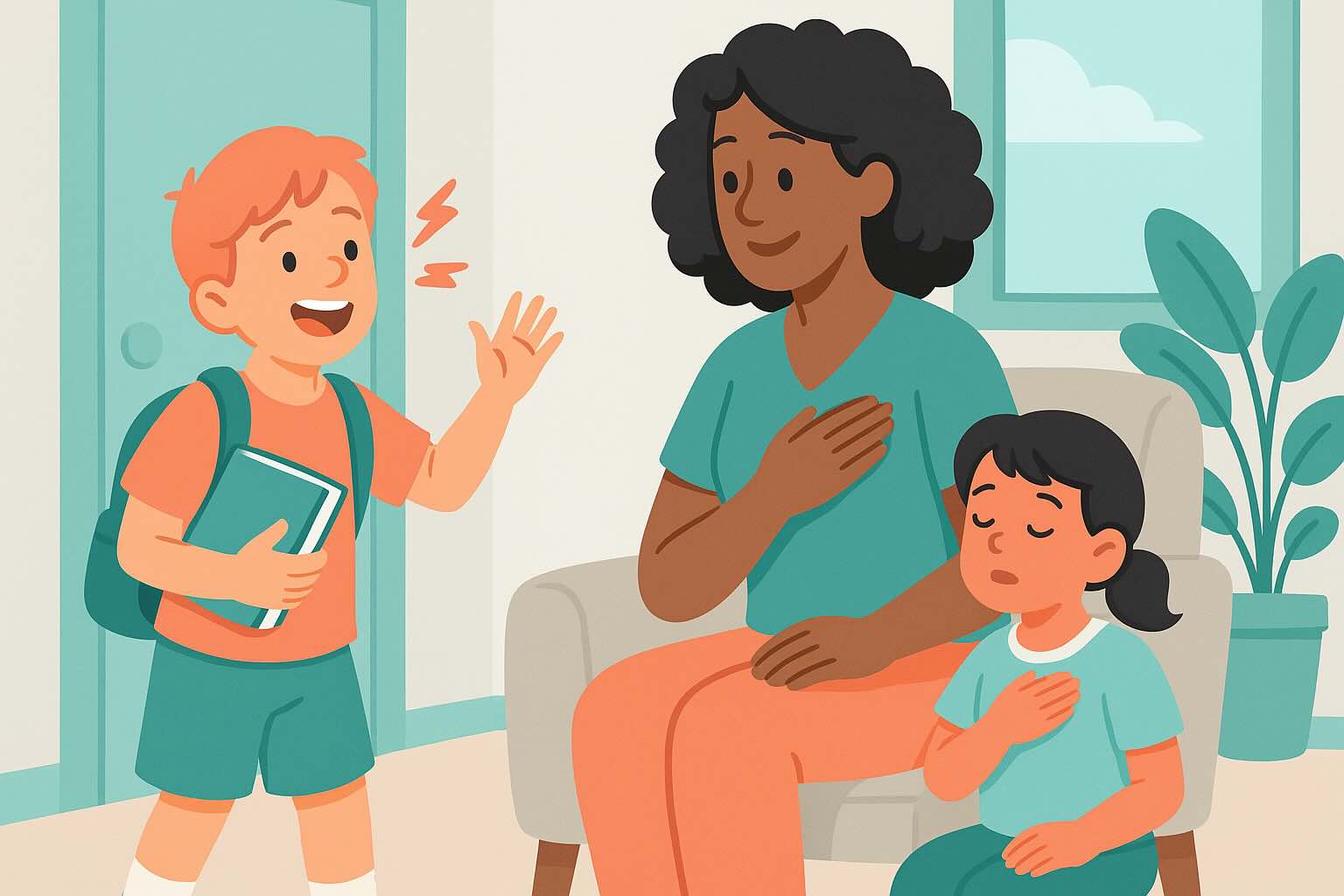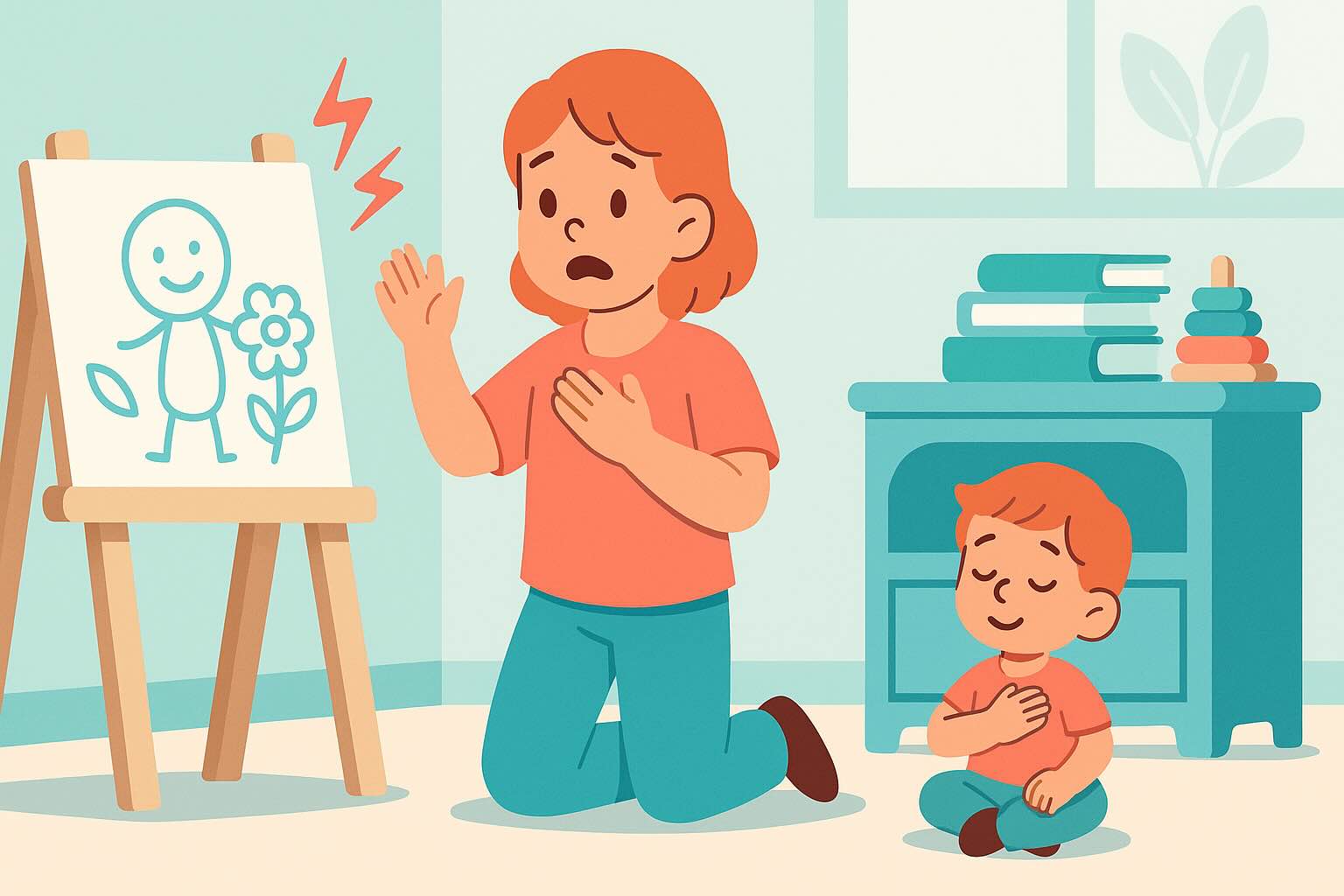Connection Before Correction: 6 Steps That End Power Struggles Forever


Your 4-year-old refuses to put on their shoes for the third time this morning. You're running late, your patience is gone, and your first instinct is to launch into correction mode: "We've talked about this! You need to listen when I ask you to do something!" But what if this approach is actually making your child less likely to cooperate, not more?
Connection before correction is the principle that your relationship with your child is the foundation for all behavior guidance. When children feel disconnected, criticized, or misunderstood, they naturally resist direction. When they feel seen, valued, and emotionally safe with you, cooperation becomes the natural response.
This comprehensive guide will revolutionize how you approach challenging behaviors by showing you how to build the connection that makes correction not just possible, but welcomed by your child. For additional foundational approaches, see our guides on curious not furious parenting and emotional safety first.
What You'll Learn in This Guide
- Why Connection Comes First - The neuroscience behind relationship and behavior
- The Disconnection-Resistance Cycle - How criticism creates more challenging behavior
- Building Micro-Connections - Quick daily practices that strengthen your bond
- Connection During Conflicts - How to maintain relationship while addressing problems
- Age-Specific Connection Strategies - What works for 3-4 vs 5-7 year olds
- Repairing Broken Connection - How to rebuild after difficult moments
- Creating a Connection Culture - Building relationship as your family foundation
- Long-Term Benefits - How connection now impacts your child's entire future
Estimated reading time: 13 minutes
The Science Behind Connection Before Correction
How Relationship Affects Brain Function
When children feel connected:
- Their stress hormones decrease (cortisol, adrenaline)
- Their learning and cooperation centers activate (prefrontal cortex)
- They're more open to guidance and instruction
- Their natural desire to please parents emerges
- They can access their best thinking and decision-making
When children feel disconnected:
- Stress hormones increase, activating survival mode
- The brain prioritizes self-protection over cooperation
- They become more resistant to direction and guidance
- Their fight-or-flight response makes them oppositional
- Learning and memory functions are impaired
The Attachment Foundation
Secure attachment research shows:
- Children cooperate most with adults they trust and feel close to
- Correction without connection feels like rejection to young children
- Repeated disconnection during discipline damages the parent-child bond
- Children who feel securely attached are naturally more compliant
- Strong relationships actually reduce the need for behavior management
The key insight: Behavior problems often signal relationship problems, not just rule-breaking.
Understanding the Disconnection-Resistance Cycle
How Traditional Correction Creates More Problems
The typical pattern:
- Child does something wrong or challenging
- Parent immediately jumps to correction/consequence
- Child feels criticized, misunderstood, or attacked
- Child becomes defensive and resistant
- Parent escalates correction efforts
- Relationship becomes strained
- Child becomes even more resistant to guidance
- Cycle repeats and intensifies
Example of the cycle in action: Child won't clean up toys
- Parent: "You never listen! Clean up these toys right now!"
- Child feels criticized and defensive
- Child: "No! I don't want to!"
- Parent escalates: "Don't talk back to me!"
- Child escalates: Throws toys, runs away
- Relationship damaged, toys still not cleaned up
Breaking the Cycle with Connection
The connection-first pattern:
- Child does something wrong or challenging
- Parent takes a breath and connects first
- Child feels seen and understood as a person
- Child's defenses come down
- Parent addresses the behavior issue
- Child is more receptive to guidance
- Relationship stays intact or even strengthens
- Cooperation increases over time
Same example with connection first: Child won't clean up toys
- Parent: "You're having fun with those toys. It's hard to stop playing."
- Child feels understood
- Parent: "And it's time to clean up for dinner. Want to race to see who can put away more blocks?"
- Child: "Yeah! I'll win!"
- Toys get cleaned up, relationship stays positive
Practical Connection Strategies by Age
Ages 3-4: Physical and Sensory Connection
Young children connect most through physical presence, touch, and sensory experiences.
Effective connection strategies:
- Get down to their eye level
- Use gentle touch (if they're receptive)
- Mirror their emotional energy briefly before guiding
- Use playful voices and expressions
- Offer choices that show respect for their autonomy
Connection scripts for 3-4 year olds:
- "I see you're having big feelings about this"
- "You really wanted that cookie" (validation before boundary)
- "That looks fun! And now it's time to..."
- "I love spending time with you, even when things are hard"
Example scenario: Bedtime resistance
- Disconnected approach: "Stop fighting bedtime! You need to go to sleep!"
- Connected approach: Sitting close "You wish bedtime wasn't happening. I get that. I love our day together too. Let's cuddle while we read your story."
Ages 5-7: Emotional and Cognitive Connection
Older children can connect through conversations, shared interests, and feeling understood on a deeper level.
Effective connection strategies:
- Ask genuine questions about their experience
- Share your own feelings appropriately
- Find common ground or shared interests
- Acknowledge their growing independence
- Show curiosity about their perspective
Connection scripts for 5-7 year olds:
- "Help me understand what's happening for you"
- "I can see this is really important to you"
- "Tell me more about how you're feeling"
- "I'm wondering if you felt _____ when _____"
Example scenario: Homework resistance
- Disconnected approach: "You're being lazy! Just do your homework!"
- Connected approach: "Homework feels really hard right now. What's the toughest part about it? I want to understand so I can help."
Building Micro-Connections Throughout the Day
The Power of Small Moments
Micro-connections are brief, positive interactions that build your relationship bank account:
- 30 seconds of undivided attention
- A genuine compliment or appreciation
- Physical affection (when welcomed)
- Shared laughter or playfulness
- Acknowledgment of their thoughts or feelings
Research shows: Five positive interactions to every negative one creates resilient relationships. Most families have the ratio reversed.
Daily Connection Opportunities
Morning connections:
- "I'm so glad to see you this morning"
- "What are you most excited about today?"
- "I love your sleepy hair" gentle touch
- Eye contact and smile while helping them get ready
Transition connections:
- "That was fun, wasn't it? Now we're going to..."
- "I see you don't want to leave. That makes sense."
- "Hold my hand while we walk to the car"
- "Tell me about what you built while we clean up"
Evening connections:
- "What was your favorite part of today?"
- "I loved watching you play today"
- "I'm grateful you're my child"
- Special bedtime routines that are just yours together
Connection During Daily Challenges
Getting dressed:
- "I love how you picked out those colors!"
- "Getting dressed can be tricky. Want help or want to try alone?"
- "Your body is growing so fast - look how tall you are!"
Meal times:
- "I notice you don't like how this tastes. What does it taste like to you?"
- "Thank you for sitting with our family"
- "I love hearing about your day while we eat"
Car rides:
- "I like our talking time in the car"
- "What do you see out your window?"
- "Want to sing a song together?"
Connection During Behavior Challenges
The "Connect First" Formula
Step 1: Pause and breathe
- Don't immediately jump to correction
- Take a moment to see your child as a whole person
- Remember they're not your enemy
Step 2: Find something to connect to
- Their feelings: "You seem frustrated"
- Their perspective: "You really wanted to keep playing"
- Their person: "I love you even when this is hard"
- Their effort: "You're trying so hard to figure this out"
Step 3: Address the behavior
- Use "AND" to bridge connection and correction
- Maintain warmth while being clear about expectations
- Offer choices when possible
Real-Life Connection During Correction
Sibling fighting:
- Connection: "You both want the same toy. That's frustrating when you both really want something."
- Correction: "AND we use gentle hands with each other. Let's find a solution that works for everyone."
Public meltdown:
- Connection: "You're so disappointed we can't get that toy. I can see how much you wanted it."
- Correction: "AND we still need to use our walking feet in the store. Would you like to hold my hand or walk by yourself?"
Morning dawdling:
- Connection: "You're having such a good time playing. It's hard to stop when you're in the middle of something fun."
- Correction: "AND we need to leave for school in 5 minutes. What do you need to grab before we go?"
Repairing Connection After Difficult Moments
When Things Go Wrong
Everyone has moments when connection breaks down:
- You lose your temper and yell
- Your child feels criticized or misunderstood
- A conflict escalates beyond what either of you intended
- Feelings get hurt on both sides
Remember: Repair is always possible and actually strengthens relationships.
The Repair Process
Step 1: Take responsibility for your part
- "I got upset and raised my voice. That wasn't helpful."
- "I think I misunderstood what you were trying to tell me."
- "I was feeling stressed and I didn't handle that well."
Step 2: Reconnect emotionally
- "I love you even when we have hard moments."
- "You're important to me, and our relationship matters."
- "Can I have a hug?" (only if they're receptive)
Step 3: Make a plan together
- "How can we handle this differently next time?"
- "What do you need from me when you're feeling upset?"
- "What could I do to help you when things get hard?"
Repair Scripts by Age
Ages 3-4:
- "Mommy got upset. I'm sorry I yelled."
- "I love you so much. Let's try again."
- "Want to snuggle and start over?"
Ages 5-7:
- "I made a mistake when I [specific behavior]. That wasn't fair to you."
- "How did that feel when I [what you did]?"
- "You're more important to me than any rule or chore."
Creating a Family Culture of Connection
Making Connection Your Default
Instead of: Leading with rules and expectations Try: Leading with relationship and understanding
Instead of: "Stop that right now!" Try: "I see you're having a hard time. Let me help."
Instead of: "You always..." Try: "Right now you're struggling with..."
For more relationship-building strategies, see our progress not perfection guide and learn about natural consequences that preserve connection.
Family Connection Practices
Daily connection rituals:
- Special one-on-one time with each child
- Family appreciation sharing at dinner
- Bedtime connection conversations
- Morning greeting rituals
Weekly connection activities:
- Child-choice activities where they lead
- Family meetings that include fun planning
- Individual parent-child dates
- Family game or movie nights
Monthly connection building:
- Looking through photos together
- Trying new activities as a family
- Celebrating each child's unique qualities
- Creating family traditions
Age-Specific Connection Challenges and Solutions
Ages 3-4: When Connection Feels Overwhelming
Common challenges:
- They need constant attention and connection
- They have big emotions that feel draining
- They resist independence but also want autonomy
- Their needs feel endless
Solutions:
- Set small, manageable connection goals
- Use parallel play as connection time
- Remember that intense need for connection is temporary
- Find ways to connect that also meet your needs
Ages 5-7: When They Start Pulling Away
Common challenges:
- They want more independence from parents
- They care more about peer relationships
- They may resist affection or connection attempts
- They can be critical or rejecting
Solutions:
- Respect their growing autonomy while staying available
- Find new ways to connect that feel age-appropriate
- Don't take their independence personally
- Maintain consistent, low-pressure connection opportunities
Long-Term Benefits of Connection-First Parenting
Immediate Benefits (2-4 weeks)
You'll notice:
- More cooperation with daily routines
- Fewer power struggles and resistance
- Quicker recovery after conflicts
- More affection and warmth from your child
- Decreased need for consequences and punishment
Medium-term Benefits (2-6 months)
Your child develops:
- Better emotional regulation skills
- Increased trust in your relationship
- More willingness to share problems with you
- Greater resilience during challenges
- Improved social skills with others
Long-term Benefits (years)
Research shows children with strong parent connections:
- Have better mental health outcomes
- Make better decisions during adolescence
- Maintain closer family relationships as adults
- Develop healthier romantic relationships
- Show greater empathy and social competence
- Have higher self-esteem and confidence
Your 4-Week Connection Building Plan
Week 1: Awareness and Foundation
- Notice when you jump to correction without connection
- Practice one micro-connection per day
- Work on getting to your child's eye level during interactions
- Start using "I see..." and "You..." validation statements
Week 2: Building Connection Habits
- Implement morning and bedtime connection rituals
- Practice the "Connect First" formula during minor challenges
- Focus on repair after difficult moments
- Increase positive interactions to 5:1 ratio
Week 3: Connection During Challenges
- Use connection before correction during behavior issues
- Practice staying calm and connected during conflicts
- Work on seeing your child's perspective before correcting
- Experiment with playfulness and humor during resistance
Week 4: Creating Family Culture
- Establish weekly family connection activities
- Have family discussions about what helps everyone feel connected
- Celebrate improvements in cooperation and relationship
- Plan for maintaining connection practices long-term
Signs Your Connection-First Approach is Working
Immediate Signs (1-2 weeks)
- Your child seeks you out more for comfort and sharing
- They accept guidance more readily
- Recovery time after conflicts decreases
- You feel warmer and more positive toward your child
Medium-term Signs (3-4 weeks)
- Daily routines flow more smoothly
- Your child volunteers information about their day and feelings
- They show more empathy and consideration for others
- You find yourself enjoying parenting more
Long-term Signs (2-3 months)
- Your child comes to you when they have problems
- They show genuine remorse and make amends when they make mistakes
- Your relationship feels more like a team than a battle
- Your child demonstrates strong emotional intelligence with others
Key Takeaways: Your Connection Before Correction Guide
- ✅ Relationship is your greatest parenting tool - behavior guidance works best within strong connections
- ✅ Connection takes as little as 30 seconds - micro-moments build major relationships
- ✅ Children cooperate with people they trust - focus on the relationship, not just compliance
- ✅ Disconnection creates resistance - criticism and correction without connection backfire
- ✅ All ages need connection differently - adapt your approach to developmental needs
- ✅ Repair is always possible - broken connection can be rebuilt stronger than before
- ✅ Connection isn't permissive - you can connect while maintaining clear boundaries
- ✅ Small consistent connections matter more than occasional big gestures
- ✅ Your relationship bank account needs regular deposits of positive interaction
- ✅ Connection benefits last a lifetime - this investment pays dividends for decades
Remember: Your child isn't trying to make your life difficult - they're trying to feel connected to you while also growing into their own person. When you lead with connection, correction becomes a natural part of your loving relationship rather than a battle to be won. The behavior will improve, but more importantly, your relationship will flourish.
This article is based on attachment theory, neuroscience research on relationships and behavior, and positive parenting psychology. Every parent-child relationship is unique, and building connection takes time and patience. Focus on progress rather than perfection as you develop these relationship-building skills.
24/7 AI Parenting Assistant
Get instant, personalized advice with expert-curated parenting knowledge. Chat with your AI coach anytime, anywhere.

Connection Before Correction Toolkit
Daily practices and scripts to build strong parent-child relationships that make behavior guidance more effective.
Frequently Asked Questions
Need personalized support?
RootWise's AI coach can provide tailored strategies for your specific situation, available 24/7 when you need it most.
Learn More About AI Coaching →



